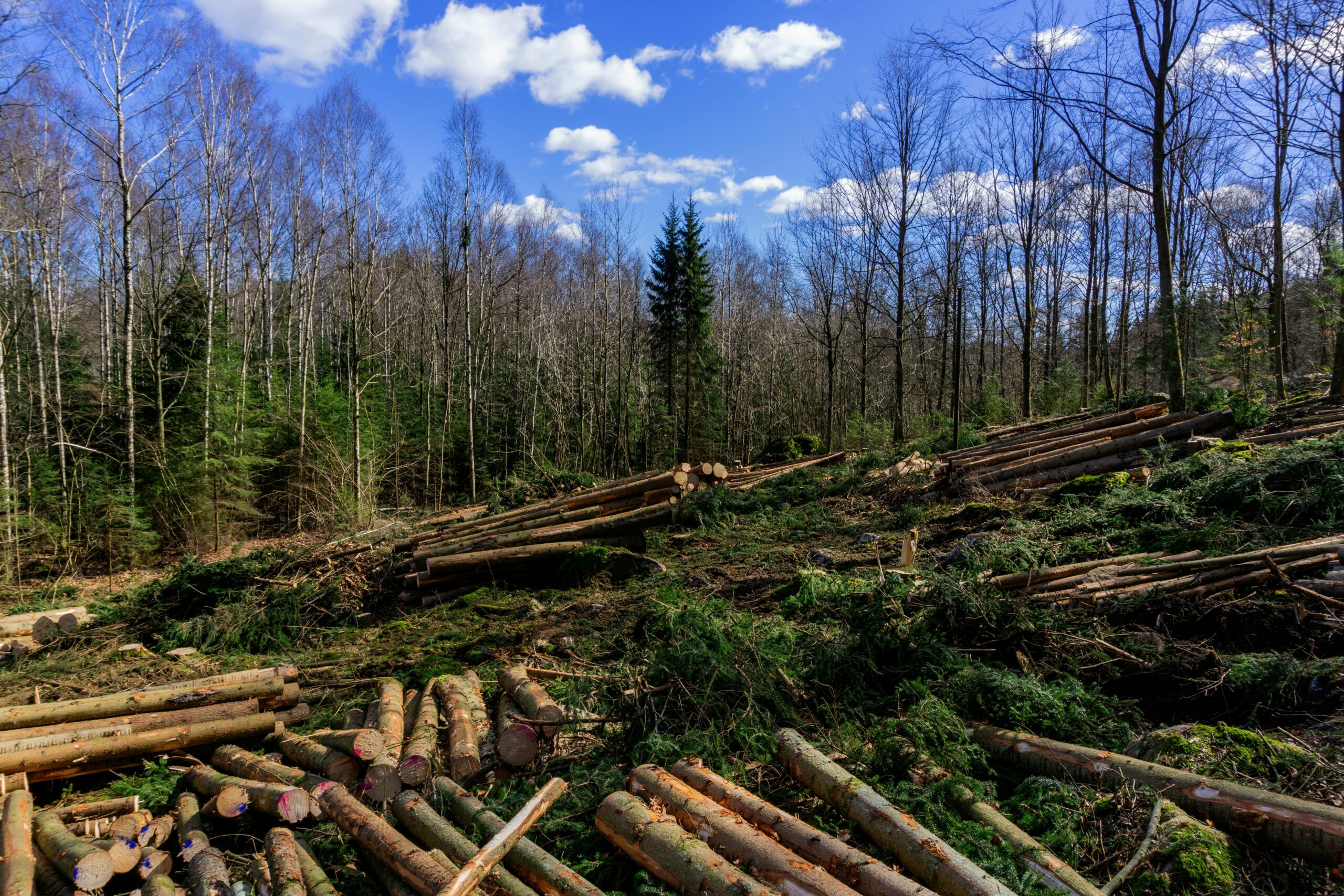The EU Deforestation Regulation, or EUDR, is one of those laws that quietly reshapes how global supply chains work. On paper, it’s about keeping deforestation-linked products out of the EU market. In practice, it’s a complete shift in how companies trace, verify, and document where their goods come from. Whether you’re trading coffee, timber, or leather, the EUDR now expects you to prove that your supply chain is clean, right down to the plot of land.
It’s not another layer of red tape for the sake of it. The goal is simple but ambitious: stop the EU from fueling deforestation and force transparency at every level of production. The law might feel complex at first, but once you break it down, the logic behind it becomes clear – protect forests, hold companies accountable, and bring real data into sustainability claims.
How Deforestation Became a Trade Problem
For decades, Europe has been one of the biggest consumers of goods linked to deforestation. Beef, coffee, palm oil, rubber, paper – all these everyday products often come from land that used to be forest.
The Intergovernmental Panel on Climate Change (IPCC) has made it clear: stopping deforestation is one of the fastest ways to cut greenhouse gas emissions. Forests store carbon, protect biodiversity, and regulate climate. When they’re cleared, that balance collapses.
So the EUDR isn’t just about environmental ethics – it’s about climate policy, supply chain reform, and global responsibility all at once.
Breaking Down What the EUDR Actually Does
The EU Deforestation Regulation (EUDR), officially known as Regulation (EU) 2023/1115, came into force on June 29, 2023. While it’s already law, the real enforcement starts in stages: large and medium-sized companies must comply by December 30, 2025, while smaller businesses have until June 30, 2026.
The purpose of the regulation is clear and practical. It aims to cut the link between global trade and deforestation by setting strict rules for products entering or leaving the European market. In essence, the EUDR demands that every company dealing with certain commodities can prove that its goods are:
- Bez odlesňování: Meaning they come from land that hasn’t been cleared or degraded after December 31, 2020.
- Legálně vyrobené: Meaning the production process complies with all environmental, social, and human rights laws in the country of origin.
- Fully traceable: Meaning the company knows exactly where its products came from, down to the specific plot of land.
This might sound like a tall order, but it’s meant to push global supply chains toward real transparency rather than vague sustainability claims.
The regulation currently covers seven high-impact commodities: wood, cattle, soy, palm oil, cocoa, coffee, and rubber. But it doesn’t stop at raw materials. It also applies to any products made from them – furniture, paper, leather goods, chocolate, tires, cosmetics, even printed materials. Essentially, if your product started with a tree, a cow, or a crop grown on converted forest land, the EUDR has you in its scope.

Building Confidence in EUDR Compliance With EUDR.co
Na adrese EUDR.co, we built our platform to take the stress and uncertainty out of EUDR compliance. We know how complex this regulation can look on paper – endless data points, satellite coordinates, risk assessments, and submission deadlines. That’s why we designed a solution that turns those requirements into clear, manageable steps.
Our system automates much of what companies would otherwise spend months trying to organize manually. Using satellite-based monitoring and advanced data analytics, we track deforestation risks and verify sustainability claims across supply chains. That means you don’t have to guess whether your supplier data is accurate – you can see it.
What makes our platform different is how accessible it is. Compliance shouldn’t be something only large corporations can afford. Whether you’re an exporter managing a small volume of coffee beans or a multinational sourcing multiple commodities, our tools adapt to your scale.
How We Make the Process Easier
- Automated monitoring and reporting: Real-time sustainability insights and deforestation analysis.
- Verified data integrity: Every report and dataset is backed by satellite evidence and field-level precision.
- Streamlined due diligence: Collect, verify, and submit compliance documentation through one intuitive interface.
- Flexible pricing and support: Designed for businesses of all sizes, not just big players.
We believe compliance shouldn’t slow growth – it should support it. Our goal is to help companies turn EUDR reporting into a sign of trust and transparency, not just another form to fill out.
If your business is preparing for the 2025 enforcement deadline, now is the right time to build your system and test your data flow. We’re here to make that transition smoother, faster, and fully compliant from day one.
Who’s Affected and Why It’s Bigger Than You Think
If your business works with raw materials like wood or palm oil, the impact of the EUDR is clear. But its reach goes much further. Retailers selling furniture, chocolate, or leather goods, and manufacturers using soy, palm oil, or rubber in food, cosmetics, and cleaning products all fall under its scope. Even sectors like automotive, which rely on natural rubber for tires and interiors, must now prove their materials are deforestation-free.
Packaging suppliers and logistics providers are also part of the picture. Since paper, cardboard, and pulp are derived from forest products, packaging is now a compliance concern. Freight companies and customs agents, meanwhile, are expected to verify documentation and keep supply chains traceable from origin to market.
The EUDR leaves no blind spots. Even if your company never touches a tree or plantation, your suppliers or distributors might. Their actions can become your responsibility, forcing every link in the chain to prove it operates without harming forests.
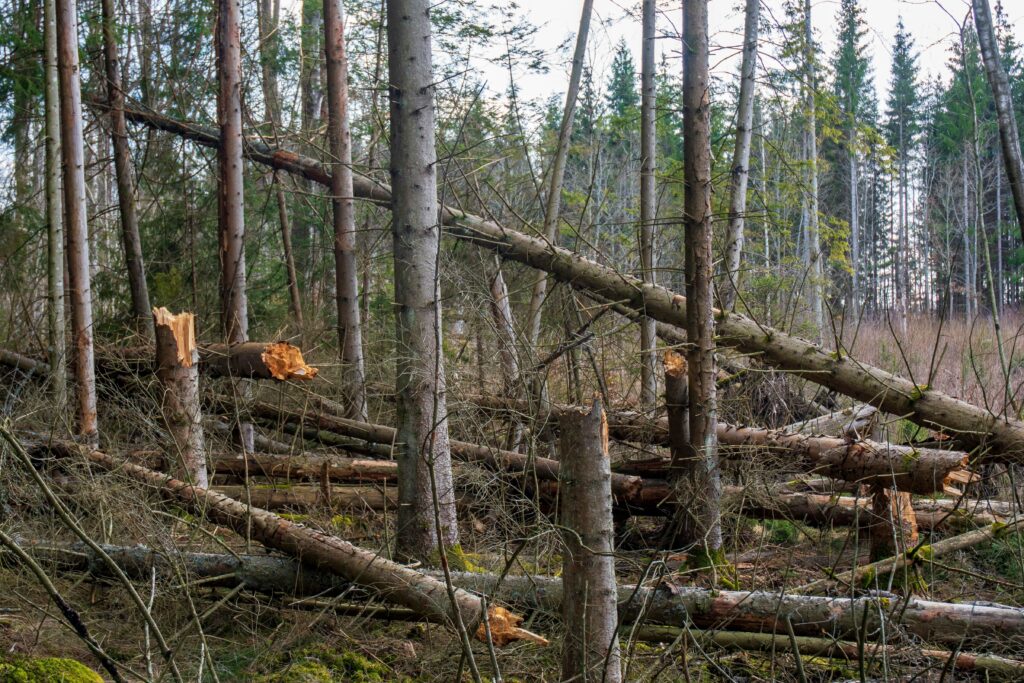
What Counts as Compliance
Under the EUDR, placing a product on the EU market is like signing a sworn statement. You’re essentially saying, “I know exactly where this came from, and I can prove it.”
1. Deforestation-Free
The land where the commodity was produced must not have been cleared or degraded after December 31, 2020. This ensures that supply chains are not linked to recent forest loss or ecosystem damage.
2. Legally Produced
Products must comply with all applicable laws in their country of origin, including those governing land use, labor rights, environmental protection, and human rights. Legal sourcing is a core pillar of compliance, not just a formality.
3. Fully Traceable
Companies must know the exact geolocation coordinates of where the commodity was grown, harvested, or raised. This data must be precise enough for authorities to verify the land’s deforestation status through satellite or digital tools.
Traceability Beyond the First Buyer
The process doesn’t end once a product enters the EU. Every trader and intermediary in the supply chain must keep and transfer the same verified documentation. Traceability must survive multiple transactions, transformations, and border crossings, ensuring that compliance remains intact from the source to the final point of sale.
The Data Revolution Behind the Regulation
If this sounds like a mountain of paperwork, that’s where technology changes the game. Meeting EUDR requirements is no longer about filing spreadsheets or manually tracing supplier chains – it’s about building a digital backbone that can prove compliance automatically.
The regulation is driving a wave of innovation across sustainability tech. Companies are adopting satellite monitoring systems that detect deforestation in near real time, geolocation databases that store exact plot coordinates, and AI tools that flag anomalies in sourcing data before they become compliance risks. Some are even experimenting with blockchain-based traceability, where every transaction and certification is time-stamped and tamper-proof.
The European Commission is building its own digital infrastructure too. Soon, due diligence statements and geolocation data will feed directly into a centralized EU information system linked with customs, allowing authorities to cross-check shipments instantly.
What used to be a quarterly sustainability report is evolving into continuous environmental verification. This is more than a technical shift – it’s a cultural one. Businesses can no longer rely on broad sustainability claims or supplier assurances. Every statement must now be supported by verifiable, real-time data that shows exactly where a product came from and how it was produced.
Inside the EU’s Risk System: Not All Countries Are Equal
The EU will soon classify each country, and in some cases specific regions within them, into three distinct deforestation risk categories:
- Země s nízkým rizikem: Companies sourcing from these regions will follow a simplified due diligence process with fewer documentation and verification steps.
- Země se standardním rizikem: The default level where full due diligence applies, including data collection, geolocation verification, and legality checks.
- Vysoce rizikové země: These require enhanced scrutiny, including detailed documentation, frequent inspections, and potentially independent audits before products can enter the EU market.
This tiered approach mirrors real-world differences in environmental enforcement and land use. A coffee farm in Colombia doesn’t carry the same risk profile as a soy plantation in the Amazon. But it also means global sourcing strategies will need to change. Where a product comes from will soon matter just as much as what it is – and that’s a major shift in how international trade operates.
Why Logistics and Customs Are Now Environmental Gatekeepers
A big part of the EUDR’s enforcement happens before goods even reach the market. Customs authorities will act as gatekeepers, checking that every shipment is backed by a valid due diligence statement. For logistics providers and freight forwarders, this adds a new layer of responsibility. They must make sure shipments are properly documented, keep compliant and non-compliant goods separate, and be prepared for possible inspections or delays at customs checkpoints.
The days when sustainability was only the producer’s concern are over. Every participant in the supply chain now plays a role in compliance. From the warehouse to the port, traceability must be maintained at each step, ensuring that environmental responsibility doesn’t end with production but continues through delivery.
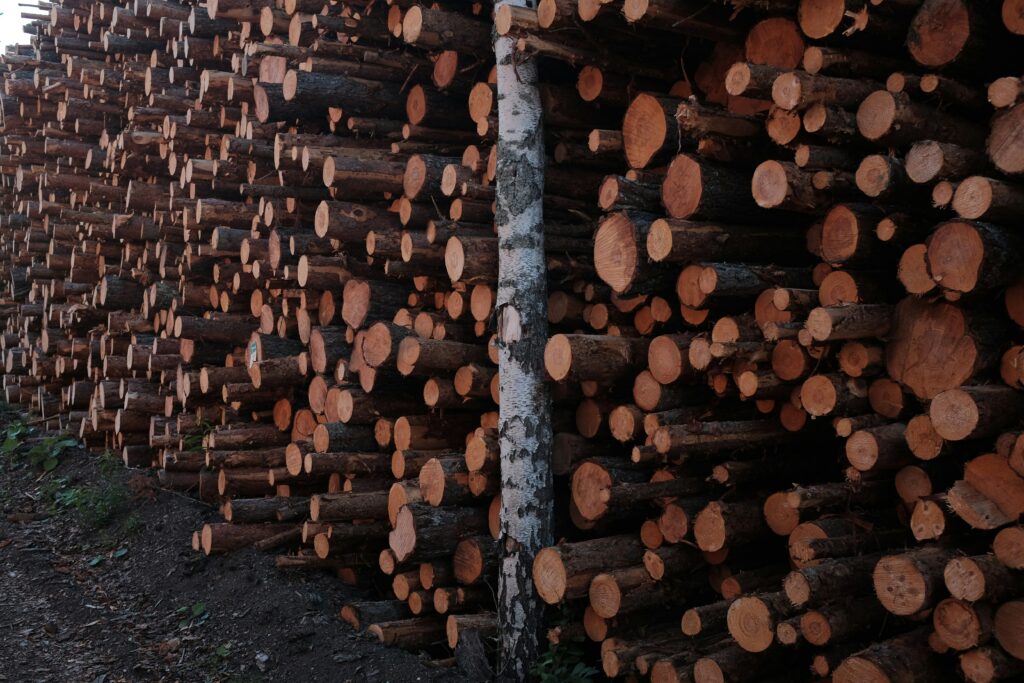
What Businesses Should Be Doing Now
Deadlines at a Glance
Most large and medium-sized companies must comply by December 30, 2025. SMEs have until June 30, 2026. Six extra months may sound generous, but once you start collecting data and verifying suppliers, that time can disappear quickly.
Map Your Supply Chains
Begin by identifying which of your products fall under the EUDR. Trace every item to its original source, mapping each stage of the journey from production to distribution. This helps reveal where documentation is weak or data is missing.
Get Your Geodata Right
Gather plot-level coordinates for all relevant production sites and confirm their accuracy. Ensure the format is standardized, and cross-check the data with satellite imagery or reliable mapping tools to confirm that land use matches your records.
Audit Supplier Documentation
Review contracts, permits, and legality proofs from every supplier. Fill in gaps early and make sure definitions of “deforestation-free” align across your supply chain. Clear communication now can prevent compliance issues later.
Digitize Traceability
Integrate traceability technology into your sourcing systems so data updates automatically. A single, centralized source of verified information makes generating due diligence statements easier and reduces human error
Train the Front Line
Compliance isn’t just a legal task – it’s an operational habit. Train procurement, legal, and logistics teams to identify red flags, validate geodata, and ensure shipments include all required documentation.
Connect EUDR to CSRD and CSDDD
If your company already reports under the CSRD or prepares for the CSDDD, align those frameworks now. Shared data and harmonized reporting save time, minimize overlap, and make your compliance process more efficient.
The Real Stakes: Penalties, Reputation, and Market Trust
Non-compliance with the EUDR isn’t something businesses can quietly correct later. The regulation gives national authorities the power to impose fines of up to 4% of annual EU turnover, seize non-compliant goods, and even recover profits made from them. In serious cases, companies can face trade bans or lose access to simplified due diligence privileges altogether.
But financial penalties are only part of the story. The European Commission plans to publish confirmed violations on public record, including company names and details of the breach. For brands built on sustainability claims, that kind of exposure can do more harm than the fine itself. Once trust is lost, it’s difficult to rebuild – especially in markets where consumers and investors increasingly expect transparency.
There’s also a human and ethical dimension. No business wants to be tied to illegal deforestation, land grabbing, or the displacement of indigenous communities. The EUDR makes those connections impossible to hide. By tracing every product back to its source, it creates a clear line of accountability. Companies that take compliance seriously aren’t just protecting themselves from penalties; they’re proving that their business values go beyond profit, aligning with the global shift toward responsible trade.
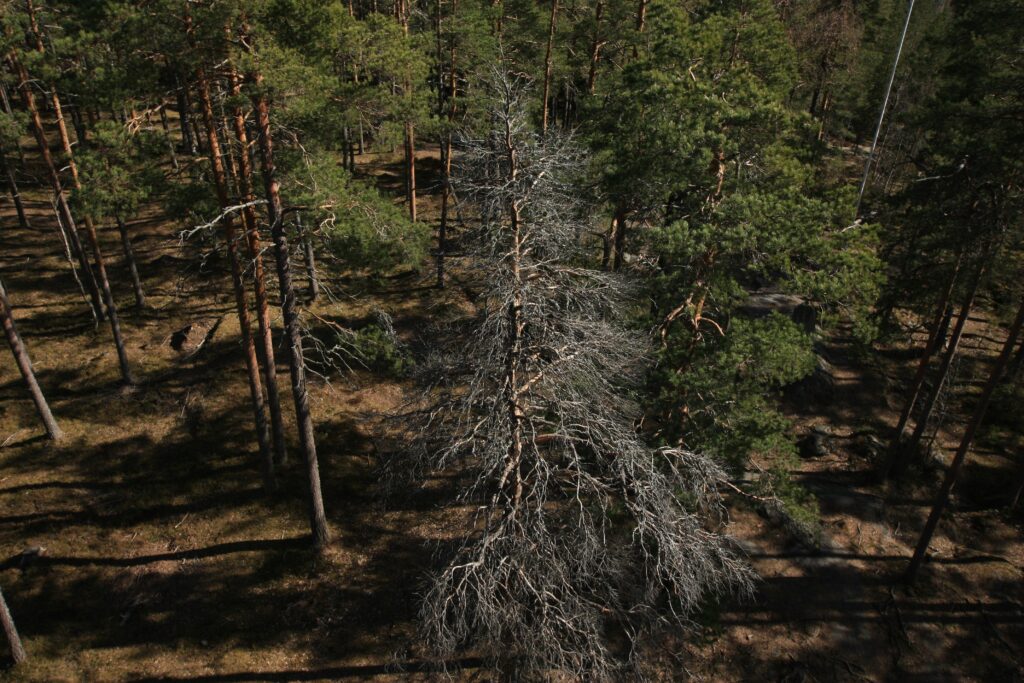
From Obligation to Opportunity: Turning Compliance Into Strategy
While some companies see EUDR as a burden, others are already treating it as an opportunity.
By building transparent, traceable supply chains, early adopters can strengthen credibility with consumers, investors, and regulators. They can also unlock access to sustainability-linked financing, where transparency reduces perceived risk.
In other words, EUDR compliance isn’t just about avoiding penalties – it’s a way to future-proof your brand.
Businesses that get ahead now will have the evidence, systems, and trust in place when transparency becomes the default expectation.
Closing Thoughts
The EUDR represents a turning point. For years, sustainability in trade was built on voluntary pledges and marketing claims. This regulation replaces all that with proof.
It’s demanding, yes, but also fair. It holds everyone to the same standard – big or small, importer or exporter. And it signals a new kind of trade system, one where transparency is worth as much as the product itself.
For any business connected to these commodities, the message is clear: start preparing now. The world is moving from “trust us” to “show us.” And that’s not just compliance – that’s progress.
Často kladené otázky
1. What is the main goal of the EUDR?
The EU Deforestation Regulation (EUDR) aims to make sure that certain products placed on or exported from the EU market are not linked to deforestation or forest degradation. It also ensures that these products are legally produced and fully traceable back to their origin.
2. Na které výrobky se vztahuje EUDR?
The regulation currently applies to seven key commodities: wood, cattle, soy, palm oil, coffee, cocoa, and rubber. It also covers products derived from them, such as furniture, paper, chocolate, leather goods, and tires.
3. When does the EUDR take effect?
The EUDR came into force on June 29, 2023. Large and medium-sized companies must comply by December 30, 2025, while small and micro-enterprises have until June 30, 2026.
4. What does “deforestation-free” mean under the EUDR?
It means that the land used to produce the commodity was not subject to deforestation or forest degradation after December 31, 2020. In other words, only products from land that has remained forest-free since that date can be traded in or out of the EU.
5. What are the main requirements for compliance?
Companies must provide evidence that their products are deforestation-free, legally produced, and traceable. They need to collect geolocation data for production sites, conduct risk assessments, and submit a due diligence statement through the EU’s online system.
6. Who enforces the EUDR?
National Competent Authorities in EU Member States will oversee compliance. They will use tools like satellite monitoring and data verification to check whether companies meet the regulation’s requirements. Customs authorities will also play a key role at import and export points.

